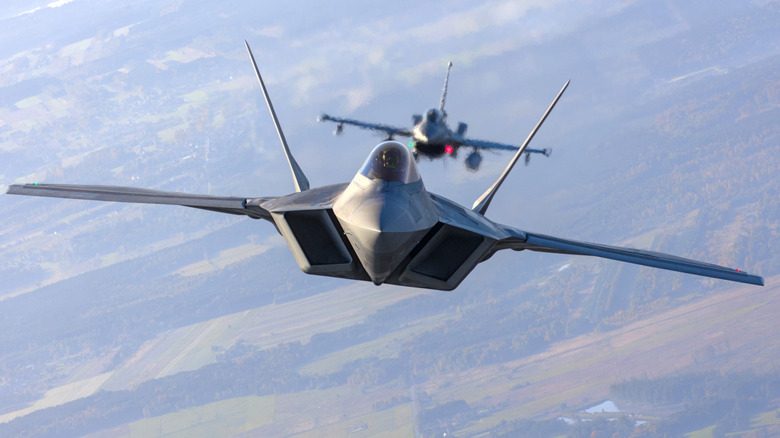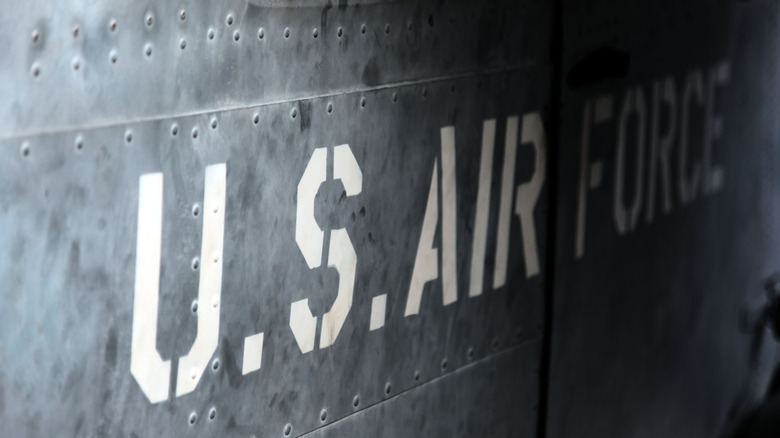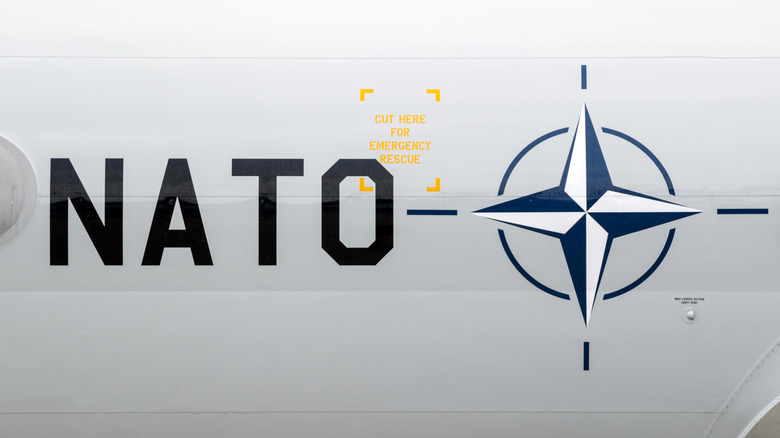Does The US Air Force Have Its Own TOPGUN School?
TOPGUN is a familiar term for many cinemagoers, but as anyone who has seen either the 1986 film or its critically acclaimed sequel knows the movie is about naval aviators going to the Navy Fighter Weapons School. The Navy isn't the only U.S. military branch that utilizes fighter jets. In fact, it's not even the branch with the most pilots. Monitoring and patrolling the skies is a role that primarily belongs to the United States Air Force and just like the Navy, it has its own TOPGUN. However, it doesn't share the TOPGUN name and it's not entirely the same curriculum as the Navy's weapons school.
The USAF Weapons School, located at Nellis Air Force Base in Nevada, can be traced back to 1949 when it was the Aircraft Gunnery School and the base was known as Las Vegas Air Force Base. The USAF found a need for such a school right after World War II and had veterans train the next generation of combat pilots. It wasn't until after the Korean War in 1954 that the school took on the name USAF Fighters Weapon School. At that time, students flew a variety of aircraft, including the F-100, the world's first supersonic fighter jet.
Just like the Navy's TOPGUN, it doesn't train pilots who are going to return to their squadrons and hop into an F-22 Raptor or F-35 Lightning II and put their newfound knowledge to use. Rather, they're sent out to teach what they learned to other pilots, becoming instructors themselves.
The USAF Fighter Weapons School demands perfection
Pilots attending the USAF Weapons School are called Weapons Undergraduates, or WUG, and they spend five and a half months at the school, learning a variety of tactics, techniques, and procedures. The curriculum is broken down into three separate phases that starts with reinforcing everything a pilot needs to know about their weapons system, such as the F-15, F-22, or F-35, and gradually integrates them with pilots from other squadrons. Once a WUG demonstrates complete proficiency in their current lessons, they're able to move onto another block of the training. They might start with one versus one in their jets and then move up to two versus one or more.
Once they're done with the foundational training, that's when WUGs integrate with other pilots. It's not simply pilots of a different jet, either, as you would see the incredible capabilities of the legendary A-10 Warthog attack plane fly training operations with rescue helicopters. By the end of the curriculum, WUGs learn to work just as well with other pilots as they do with surface personnel and they're all absolute authorities in their field. As of 2022, there are 21 squadrons, teaching 31 Weapons Instructor Courses, eight Advanced Enlisted Courses and 39 combat specialties at nine locations.
Col. Adrian "Elmo" Spain, Commandant of the USAF Weapons School, said, "It's the only place in the Department of Defense that trains to this level and it is certainly the envy of every other Air Force on the planet," according to SOFREP.
America doesn't have the only TOPGUN schools
When a fighter pilot goes through flight school, they learn the basics for flying a military plane along with some various combat maneuvers. However, there's always more that pilots can learn. Tactics are always evolving, no matter which front you find yourself on. When you have allies all around the world, it's important to learn what kind of tricks they bring to the fight, as well. That's why the North Atlantic Treaty Organization (NATO) has its very own TOPGUN school known as the Tactical Leadership Programme (TLP). It differs from the USAF and US Navy's schools slightly.
Unlike America's specialized weapons schools that put a large emphasis on learning new tactics, the TLP focuses on teaching its pilots how best to work together. There are 32 countries that comprise NATO, 10 of which take part in the TLP school. By participating in TLP, pilots learn to conduct multinational missions and accomplish complex scenarios. The school originated in 1978 in the Federal Republic of Germany before moving to Belgium in 1989 and is now based in Albacete, Spain. In 2024, the TLP focused on integrating fifth generation fighter jets like the F-35 Lightning II into the international strategy.
Pilots are split up into two teams with one representing the allied nations (Blue team) and the other adversarial nations–commonly called Red Air in training missions. Everyone participating gets plenty of practice against different aircraft, including the MQ-9 Predator B drone.


